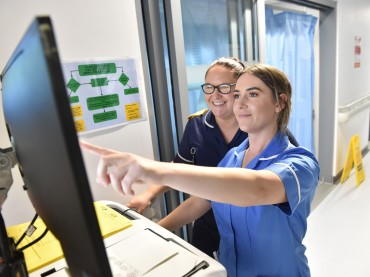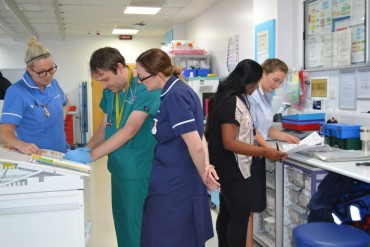The Speech and Language therapist (SLT) assesses a person’s swallow to determine the nature of the difficulty. This will include taking a thorough case history, observing the person eat and drink various items and conducting an instrumental assessment of swallowing, such as an x-ray of the swallow, when needed. The SLT will then make recommendations surrounding:
- Safe swallow strategies
- Food and/or fluid texture modification
- Swallowing exercises (where appropriate)
The SLT will work with the person, their family/carers and other health professionals in managing their swallowing difficulties. The SLT will take into account the person’s preferences, wishes and overall medical care when making recommendations to ensure that the person’s quality of life is optimised.
There may be times when a person’s is unable to eat and drink anything safely, regardless of texture. The SLT will work closely with the person, their family/carers, the GP and other healthcare professionals to develop an appropriate management plan. This may include considering Eating and Drinking with Acknowledged Risks (EDAR Patient Info Leaflet PL1469). If the person is approaching end of life, Comfort Feeding or Taste for Pleasure (Eating and Drinking for Comfort and Taste for Pleasure) would also be considered.
Instrumental assessment
At times the SLT will recommend an instrumental assessment of the swallowing. There are two different assessments that can be offered depending on if you are an inpatient or a community patient. These are:
- “Videofluoroscopy” or “Modified Barium Swallow”.
- This is conducted in the x-ray department with a Radiographer and Speech and Language Therapist
- The SLT will provide you with different food and drink consistencies mixed with a barium solution.
- The SLT can watch what happens when you swallow and if any of the food or drink enters your windpipe.
- This can be offered to both inpatients and community patients when appropriate
- To watch what happens during a videofluoroscopy, watch this video. Please note this video was produced by a health service in the USA therefore does not depict an exact overview of the room used and staff involved here at the BVH.
- “Fibreoptic Endoscopic Evaluation of Swallowing (FFES)”
- This can only be offered to inpatients in ICU at this point in time
- This is conducted by a Speech and Language Therapist
- An endoscope (a thin tube with a camera on one end) is inserted into your nose so that the throat can be seen whilst you are swallowing
- The SLT will be able to see if there are any difficulties and if the food or drink enters your windpipe.



